Hey guys! I definitely need to update my transformation photo page on my site. However. If you guys want to see some amazing transformations check out my instagram fee: www.instagram.com/trainitright
For now I want to share my clients Sue's journey through her words and photos below. Hopefully it inspires you to be the best version of yourself that you can be, chase after your dreams and not to let anything stop you!
"My Journey!
Not a lot of people know about me and my journey, I am getting a lot of messages regarding my transformation ,what motivated me and how I got into fitness so here I am sharing with you my journey .
Let me introduce myself, I am married and have 2 kids age 13 and 8. Just like a lot of busy mommies out there I hardly made time for myself , I was always busy with my full time job and taking care of my family . I ate unhealthy food and never went to the gym my excuse was I don’t have time, I was over weight . In 2010, when I was going through my old pictures I realized how much weight I have gained. I missed how I looked in high school and it was then the first time a thought to lose couple of lbs , so I joined a near by gym and followed some random diet plan from the internet. At the gym when I use to see fitness competitors I just wished I had their physique they always inspired me and I wished I was one of them , but then I knew it was not possible, too many obstacles my background, young kids , culture, and I knew my family would never support me. In 2011 I managed to lose some weight however, didn’t follow a proper diet nor a workout plan just random online plans. I continued eating healthy and going to the gym.
In November 2015, a thought “why can’t I compete, if they can do it why can’t I “ haha I had no clue what the process was , had no coach, didn’t know how to walk in heels and never went to see a show . I did not know where and how to start yet, I set a goal for myself that I will compete. I wanted to do something for me , I wanted to take a challenge and prove my self and wanted to follow my dreams.
Initially I wanted to do a show in 2016 started the process and within 2 months I dropped out due to medical and health reasons . It was a set back, took a long break from the gym and diet however that didn’t stop me , I couldn’t wait to get back to the gym and start training . All I could think of and dreamed about was the stage. In 2017 I decided that this year will be my year and I will do what ever it takes to reach my goal.
I had few coaches and was not happy with them . Then in July 2017 , A friend of mine referred me to Team Trex, after meeting Alicia I just knew I found my coach, now I have all the right tools and I can do this , I felt pretty confident. Alicia gave me the right training, motivated me and gave me the right support and guidance that I was looking for . She really cared about me , always checking in making sure I am following the plan and were on track.
I use to hit the gym twice or sometimes three times a day , work full time, participate in all my kids activities, do my meal prep on Sundays and my one on one training sessions with my coach twice a week which was 1-2 hrs of commute .
I have made many sacrifices as they say nothing comes easy , so many hardships and life curve ball thrown at me I overpowered them all . I also lost my job when I was 8 weeks out from my show , it hit me hard yet, I didn’t give up. My biggest supporter is my husband, and a million thanks to this man for the amount of love and support I received from him through the entire prep. I still remember when I first told him “hun I want to compete “ he just looked at me nodded his head and walked away.. lol he thought I was out of my mind, I am in my mid 30’s , mother of two, not in the greatest shape , don’t have a coach, plus it was a culture thing so wearing a bikini and walking on the stage was a no no lol . However, he saw how dedicated and determined I was and my love for the sport , he understood and decided to support me .He supported me mentally and emotionally, motivated me, pushed me to work my hardest at the gym and stood by me all along . This wouldn’t have been possible without him .
When I stepped on the stage on November 18th it was the best feeling ever, the dream that I have been chasing for the past 2 years come true . I won bikini masters short and I came 3rd in open bikini. I am so proud of what I was able to accomplish and bring to the stage. My hard work paid off. It was a lot of hardwork, sacrifices , dedication and discipline to get to were I am today.
We all have our stories what gets us started and this is my story.
I believe “Keep your goals in mind and never underestimate what you are capable of . Dream big !work hard and stay focused "


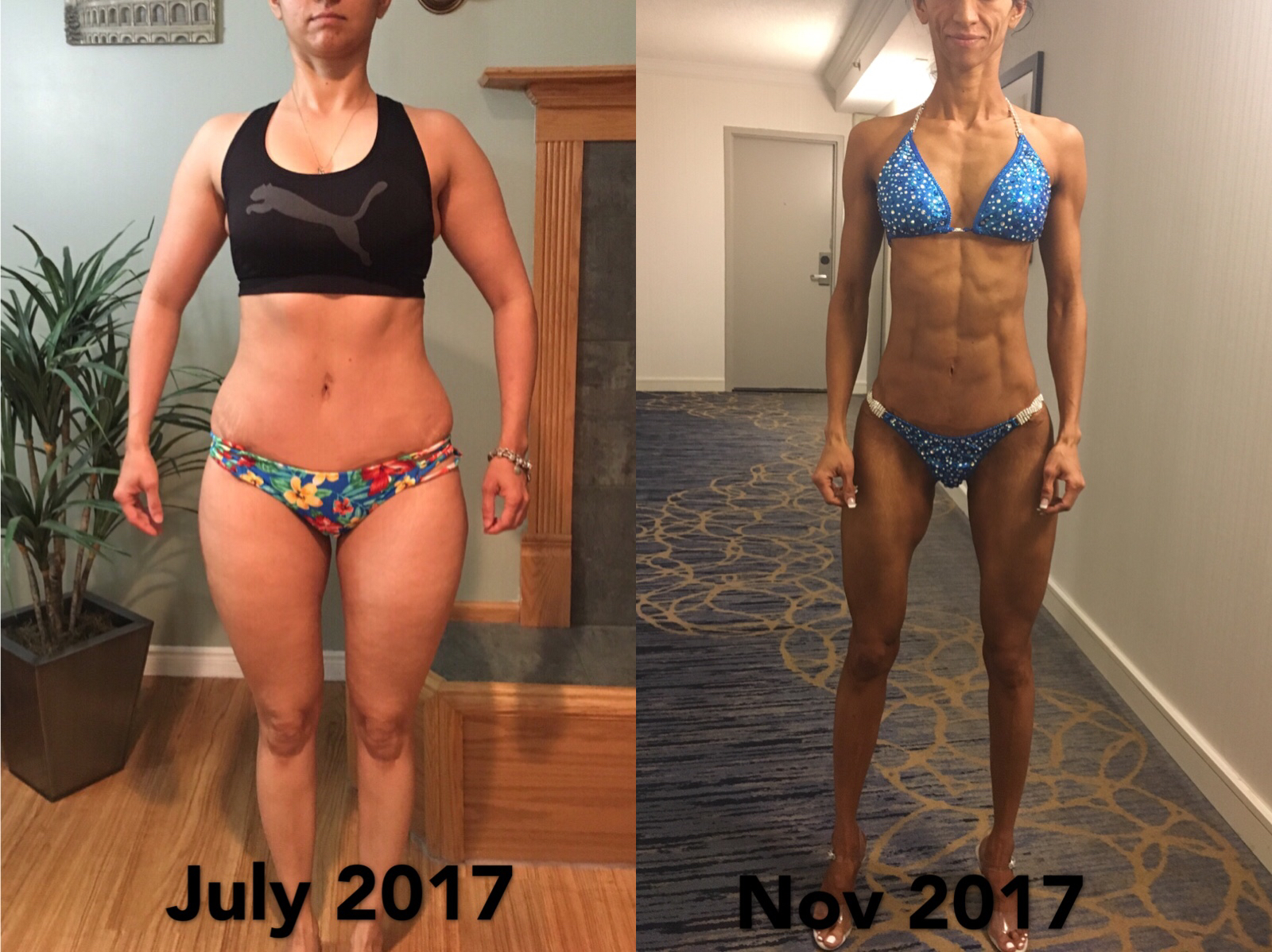
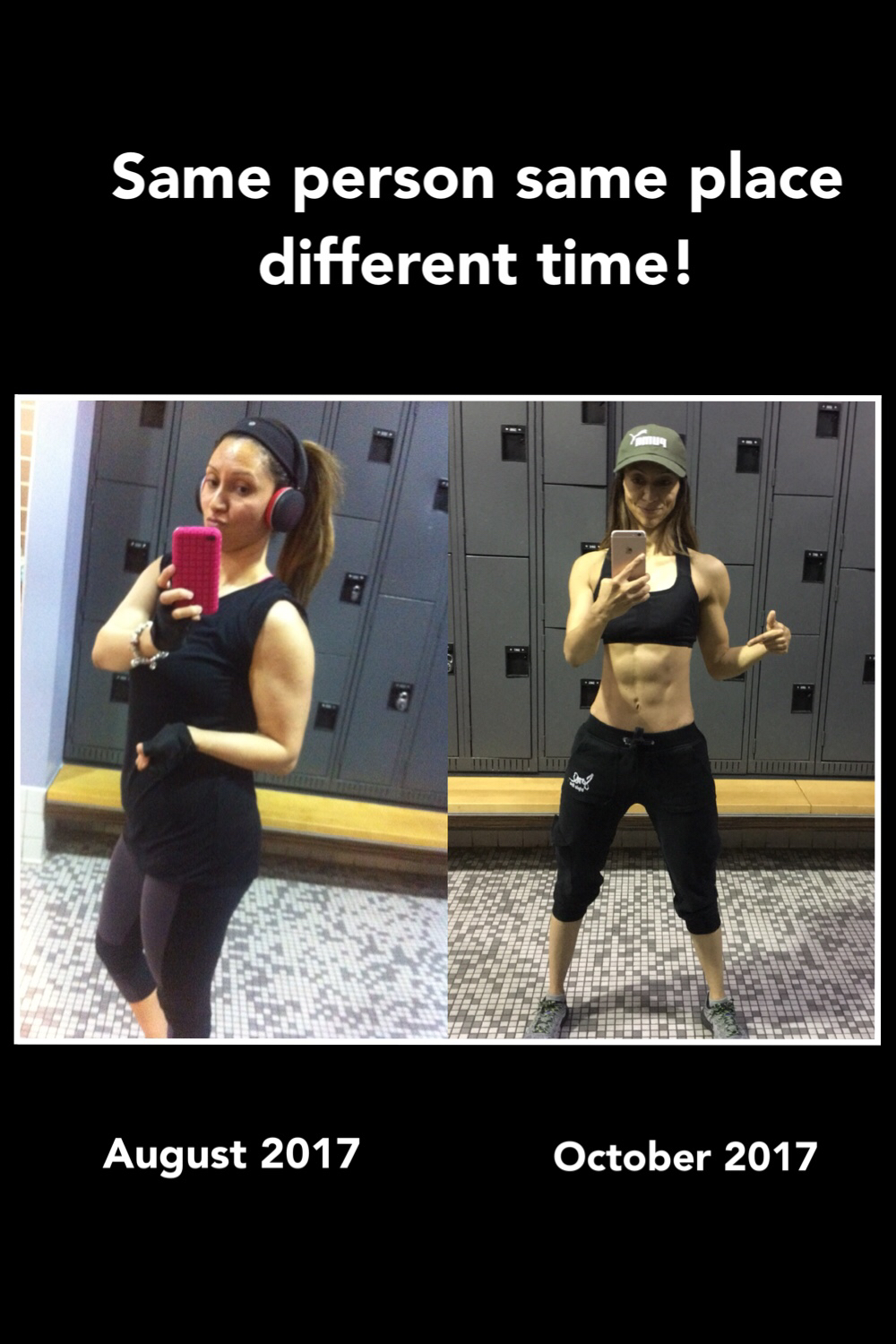
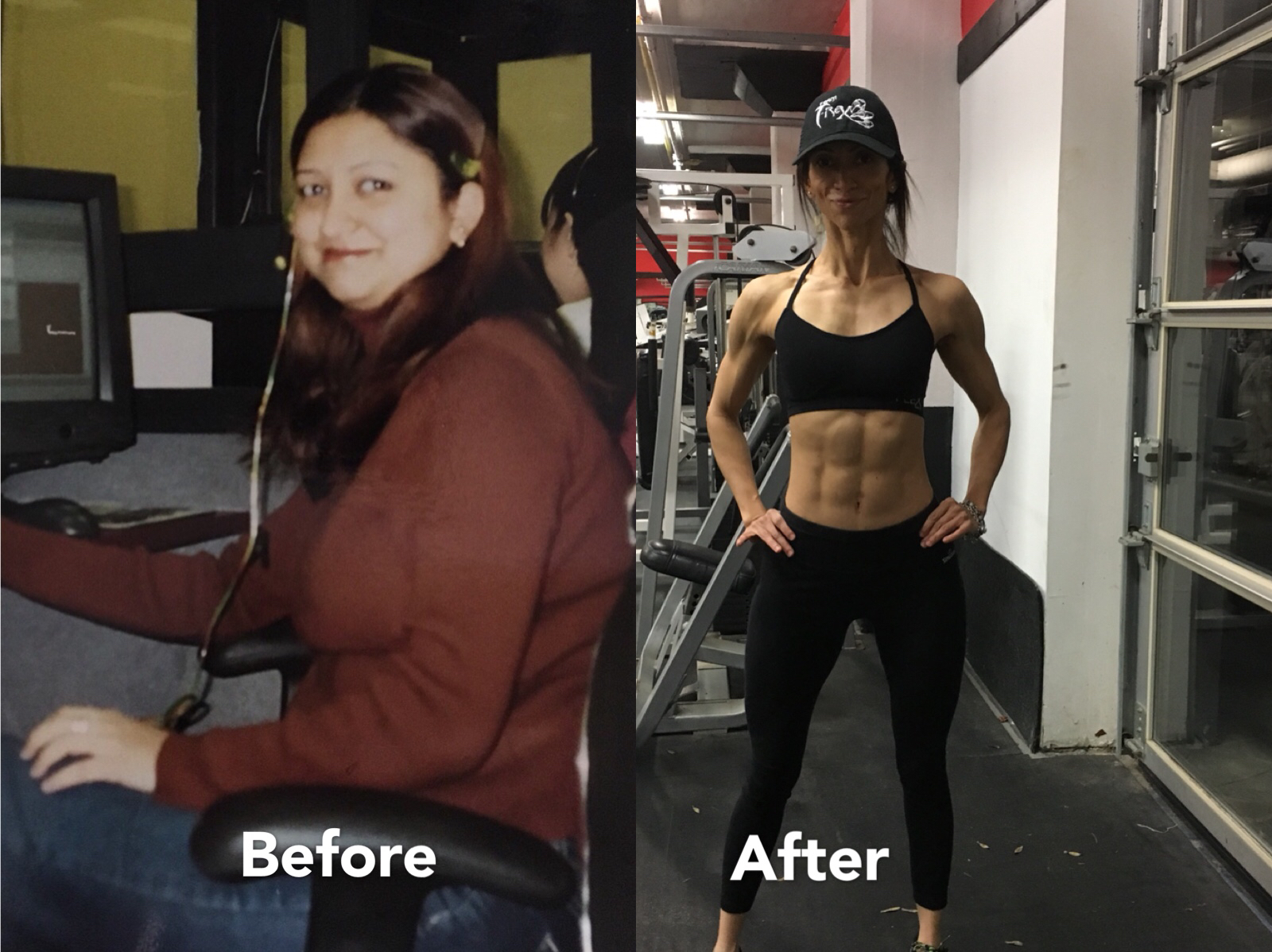

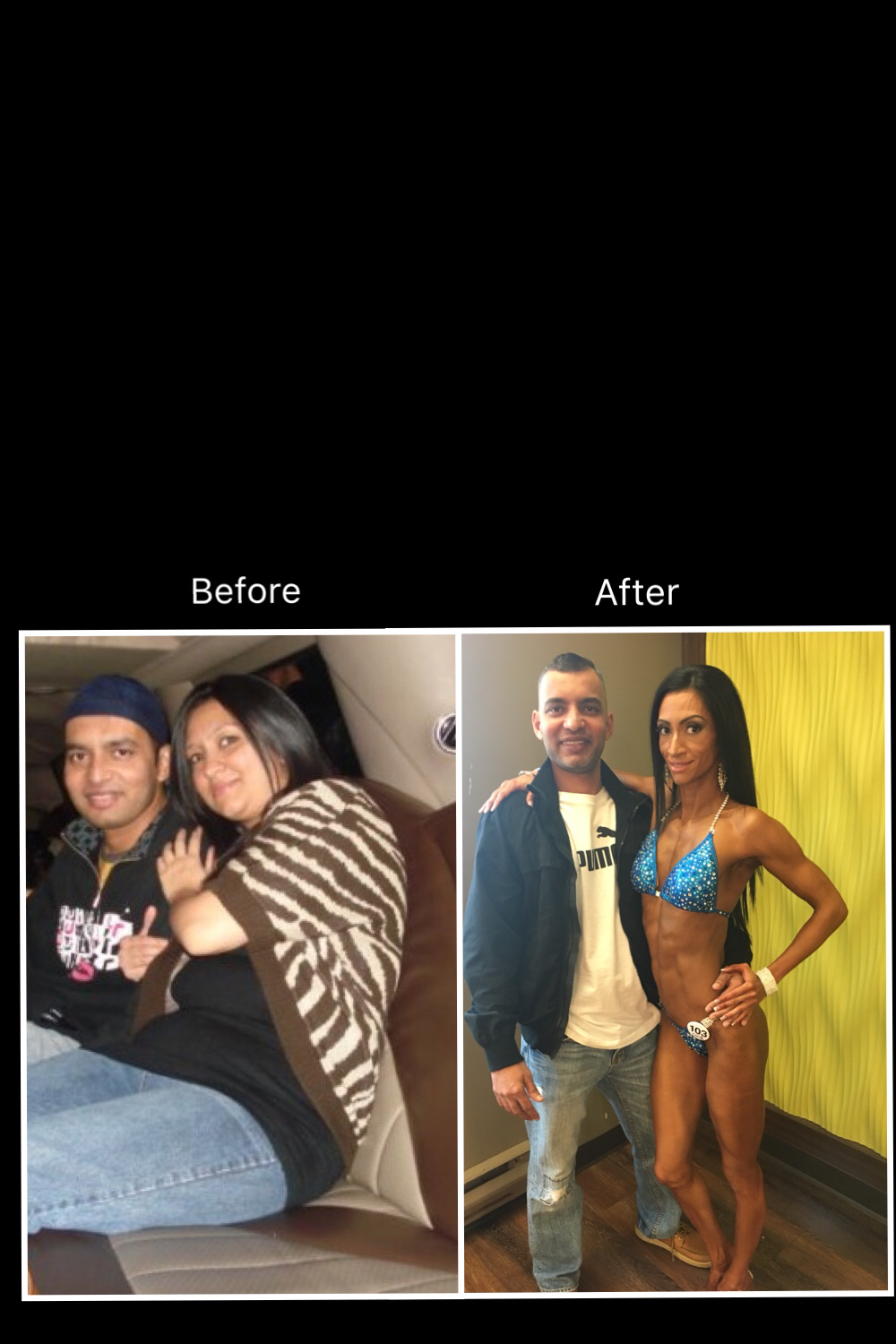
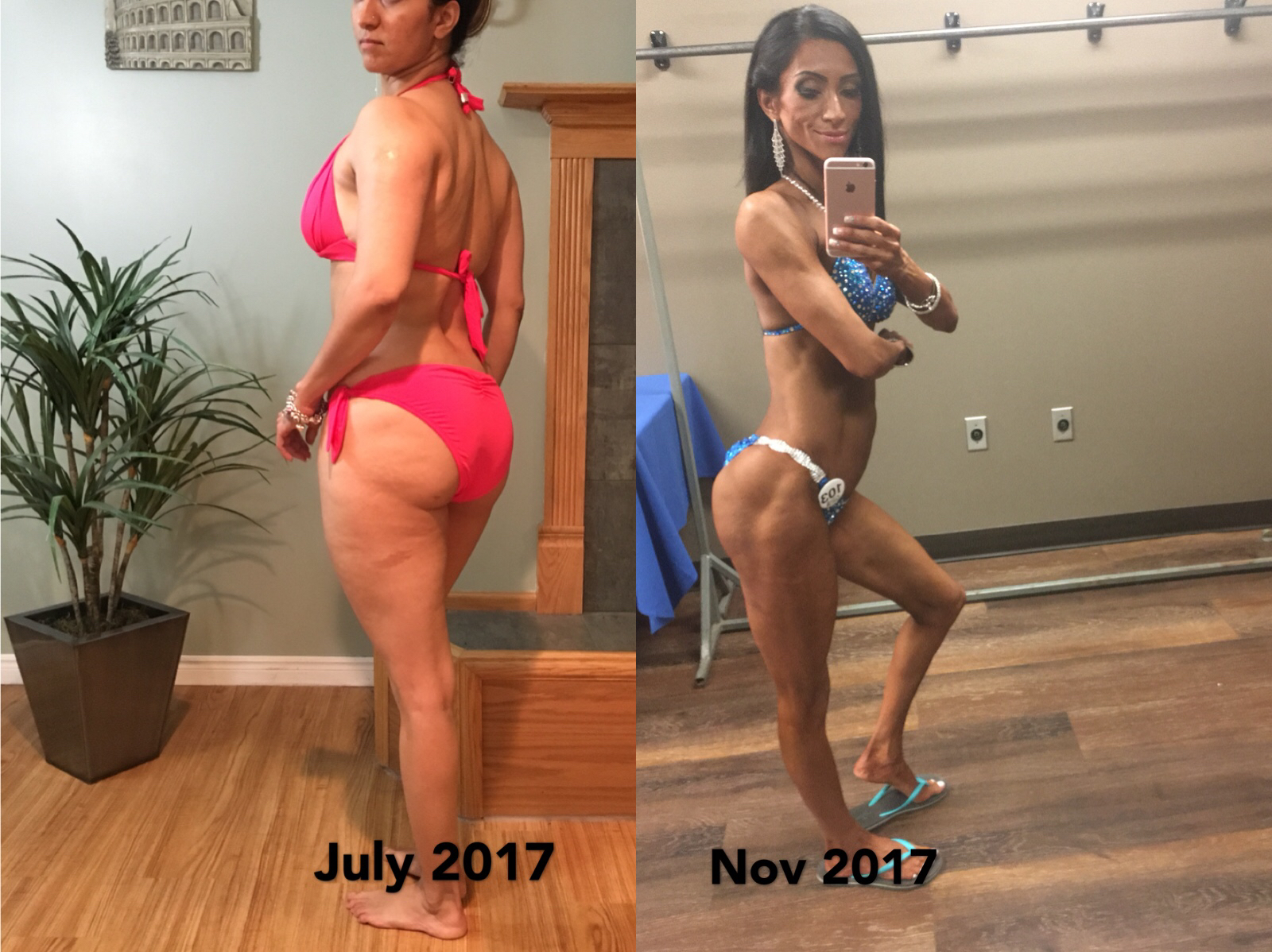

Hey Guys!
Its me here checking in with another personal blog! I wanted to drop you all a line at about 13 weeks out for me.
This prep I have a completely different mindset....And it literally is to give it everythig I have. Before to be honest I use to be a little lenient with my diet. Extra spoonfuls of PB, 1/2 cream in my coffee, sweeteners. And I want it so bad that this prep I am allowing myself NON of that. Im following everything to a T. I use to complain that I was hungry guys. NO MORE. Its part of the process and I have to embrace it. Not everything is going to be easy. Just because Im genetically gifted doesn't mean I don't have to work hard. EMRACE THE SUCK!
I found this meme this morning and it really speaks to me so I wanted to share it with you guys!

The Six Stressors That Harm Your Health & What You Can Do About It - Interviews Available
Jonathan Glass, M.Ac. Ayurvedic Practitioner and Author of the upcoming book "Total Life Cleanse" is available for interviews.
It is helpful to know the stressors in life that can cause the greatest consequences to our health. Even better is identifying those stressors that are unique to ourselves. Doing so empowers us to take actions that have the greatest impact on our well-being. These stressors can be broken down into the following six categories:
Mental and Emotional Stressors
Chronic mental and emotional stress causes biochemical and physiological changes in the body, with detrimental long-term effects. It especially impacts the adrenal, thyroid, and pancreas glands, which secrete essential hormones relating not just to stress response but also to energy production, blood sugar, metabolism, fertility, and mood. As our energy wanes, the body begins to rely on sugar for energy production, and the pancreas is forced to work harder. When any of them struggle, the brain, cardiovascular, digestive, and nervous systems suffer as well.
Dietary Stressors
Junk food requires more of our energy to digest than it provides in nutrition; we end up with an energy deficit in both body and mind. Food sensitivities (intolerances) and allergies are also common sources of dietary stress. Symptoms can include mood changes, irritability, foggy brain, headache, itchy skin or eyes, acne, ear infections, chronic cough, acid reflux, stuffy nose, gas, bloating, constipation, fatigue, and loose bowels.
Immune Stressors
Immune challenges classically come from chronic viral, bacterial, fungal, and parasitic infections. Chronic autoimmune issues occur when pathogens, such as viruses, burrow their way into the tissues and organs of the body. Due to various factors such as poor diet, nutritional imbalances, immune suppression, toxic exposure, and stress, the immune system is unable to fully handle the pathogens.
Chemicals
Chemicals cause problems due to their toxicity or because we have an allergic response to them. Chemical toxins include environmental chemicals such as pesticides and herbicides, food and cosmetics additives, and recreational and pharmaceutical drugs. Chemicals particularly stress the liver and kidneys and cause a great deal of oxidative damage to the body.
Heavy Metals
Heavy metals are high-density metallic elements that are toxic and poisonous even at low concentrations. They are found everywhere in the environment and can enter the body through water, air, food, and skin contact. The most common ones are lead, aluminum, mercury, cadmium, and arsenic, and the most common route of exposure is through produce grown in toxic soil, vaccines, dental amalgams, fish, and polluted air.
Scars
Energy pathways called meridians run throughout the entire body, each one relating to a specific organ system. Scars from injuries and surgical procedures can disrupt the healthy flow of bioelectric energy, or chi. Treating scars with acupuncture, liniments, and moxibustion (herbal heat therapy) has been part of Chinese medicine for hundreds of years. Eliminating energy blocks caused by scars is often a missing link to regaining health and vitality
About Jonathan Glass
Jonathan Glass L.Ac., M.Ac., CHT (
http://healingessencecenter.com), is a Licensed Master Acupuncturist, Ayurvedic Practitioner, Reconnective Healer, Energy Healer, Certified Hypnotherapist, Herbalist, Muscle Response Tester and Natural Health Educator. He is on the faculty of The Dharma Institute of Yoga and Ayurveda and has served on the faculty of the New England School of Acupuncture. He presently teaches at numerous yoga schools locally and throughout the US.
Total Life Cleanse: A 28-Day Program to Detoxify and Nourish the Body, Mind, and Soul Paperback - January 30, 2018

Most diaper creams promise fast relief and are loaded with ingredients (chemicals) that are said to treat and eliminate diaper rash, but consumers are not seeing the truth in these products.
Baby Butz diaper cream creator Majda Ficko’s son Demitri was born 15 years ago with a rare condition called Cornelia de Lange syndrome and has been in diapers 24-hours a day ever since. “Demitri spent the first three years of his life in and out of hospital and a pharmacist there had formulated a skin cream for him,” says Ficko, a mother of three. “But when the pharmacy closed, the cream was no longer available and I was at the mercy of whatever diaper creams were on the market, none of which worked and are packed with harsh chemicals.”
Desperate, Ficko tracked down the ingredients used by the hospital pharmacy and with a Research Chemist, spent two years perfecting a diaper cream for Demitri. “I never intended to sell this cream but a doctor at the Children’s Rehabilitation Centre in Winnipeg said to me ‘Why should your son be the only one to benefit from this?’ As a mother, that really struck a chord with me,” says Ficko, owner of Olen Cosmetics, manufacturer and distributor of Baby Butz and other natural hair and body care products.
So, Baby Butz diaper cream was born! The certified all-natural product, which is gluten and paraben-free and never tested on animals is unlike any diaper cream on the market today. Once launched, Baby Butz quickly won a Seal of Approval from Parent Tested, Parent Approved website which catapulted Ficko and her diaper rash cream straight to Hollywood. “I was invited to gifting suites at the Oscars and Golden Globes and handed out Baby Butz diaper cream to celebrity parents and expectant parents,” says Ficko, “Knowing celebrities are using my son’s diaper cream is so surreal!”
Not only is Hollywood clamoring for Baby Butz but doctors are too. Backed by doctors because the cream is 100% natural and begins the healing process immediately and stays put. Just four hours after applying the cream parents notice visible improvement in their child’s diaper rash. “Demitri has never come in with a diaper rash since he has been using it,” says Dr. Janet Grabowski, Demitri’s pediatrician. “Because of (Baby Butz’s) success, I’m now recommending it to my patients.”
Every new mom needs this cream in case their baby ever has diaper rash. Diaper rash is no laughing matter, it can lead very quickly to raw skin and worse. Olen Cosmetics has created *the* best solution to this dilemma with their Baby Butz Cream. The safest and most effective diaper rash treatment available without a prescription. 100% natural ingredients and 30% zinc oxide. Used in hospital neonatal units and many pediatricians hand out samples plus medical professionals have endorsed this cream. No Chemicals, no Alcohol, no perfumes and hypoallergenic!
Age range: Birth+
MSRP: $6.49 (2 ounces)
Available online: https://www.amazon.com/Baby-Butz-Diaper-Cream-Natural/dp/B00IK6BI0M/ref=sr_1_1_a_it?ie=UTF8&qid=1499817933&sr=8-1&keywords=baby+butz+cream
SickKids brings sweet treats with Milk & Cookies truck powered by RL Solutions
Holiday initiative kicks off in Toronto on December 4, in support of The Hospital for Sick Children; GPS-enabled truck lets people follow along via dedicated website and mobile app
Toronto, ON – Looking for a good cause to go with your holiday treat?
SickKids will be driving a Milk & Cookies truck around the city to spread good cheer and treats in support of its donation drive this festive season. Powered by creator of innovative healthcare software, Toronto-based
RL Solutions, Torontonians can track and follow the food truck in real time, through a dedicated website and mobile app.The SickKids Milk & Cookies truck will be visiting a host of local events and neighbourhoods, from December 4 to 23.
For a suggested donation of $10, supporters will receive a Le Gourmand chocolate chip cookie paired with a refreshing glass of milk provided by Sheldon Creek Diary. A dedicated web app, SKMilkandCookies.com, created by RL Solutions, will have a live digital tracker showing both the exact location of the GPS-enabled truck as well as its upcoming travel schedule, making it simple to follow along. Users can also access images from the campaign’s hashtag and share the Milk & Cookies location across their social networks. All proceeds will go directly to SickKids.

"Having the opportunity to partner with one of our clients to bring joy to people in our community exemplifies what a true partnership is all about,” said Sanjay Malaviya, President & CEO, RL Solutions. “We’re both excited and honoured to be powering the SickKids Milk & Cookies food truck this holiday season, and look forward to tracking the truck as it makes its way across Toronto.”
This holiday campaign furthers RL Solutions’ ongoing support of the local health and tech community, including last year’s SickKids Holiday Jumble game and an upcoming partnership with TechTO and FreeGeekToronto.

SickKids and RL Solutions are hoping to bring the magic of the holiday season to children and their families at the hospital by engaging the Toronto community one cookie at a time. Visit
SKMilkandCookies.com to track the truck. The full schedule will be available as of December 4.
About RL Solutions
RL Solutions designs innovative healthcare software for patient feedback, infection prevention & risk management and more to support overall quality and experience in healthcare. RL Solutions has over 1,800 clients, including healthcare networks, hospitals, long-term care facilities. RL Solutions is a global company with offices in Canada, the United States, Australia and the UK.
Website: rlsolutions.com
Twitter: @RLSolutions
Facebook: @RLSolutionsTechnology
Instagram: @RLSolutions
Hashtag: #PoweredbyRL #SickKidsVS
New Designation Recognizes Health Standards Organization's Leadership in Developing Health and Social Service Standards
OTTAWA, Nov. 28, 2017 /CNW/ - Health Standards Organization (HSO) has officially been accredited by the Standards Council of Canada (SCC) to develop National Standards of Canada in health and social services. HSO is the only Standards Development Organization in Canada solely dedicated to developing health and social service standards.
"HSO is very pleased to have achieved this important designation from the SCC. Setting health and social services standards for Canadians is a responsibility we take very seriously and we look forward to delivering on our new mandate with pride and excellence," said HSO Chief Executive Officer Leslee Thompson. "This helps fulfill our mandate to unleash the power and potential of people around the world who share our passion for achieving quality health services for all."
Standards are all around us: from automobile safety to energy performance standards for light bulbs. With this announcement, HSO is uniquely positioned to focus exclusively on health or social service standards developed by health and social service experts, patients and families, policy makers and subject matter experts. Previously, this had been up to the discretion of associations, provinces, territories, Indigenous communities, individual hospitals, or clinics. HSO was created in order to advocate for the importance of and create nationally recognized, rigorous standards.
"Whether you are going to the ER in Whitehorse or Toronto or have to be rushed to the hospital by ambulance in Montreal or St. John's, Canadians should expect the same set of health standards across the country," continued Thompson.
What are some examples of an HSO health and social service standard?
- Integrated Health Services
- Medication Management
- Indigenous Health
- Primary Health Care
- Mental Health and Addictions
- Care in the Community and Home
- Technology Enabled Health
- Assessment Methodologies
- Academic Health Centres and Clinical Research
- Communication in Health Services
- Palliative and End-of-Life Care
Why do health and social service standards matter?
- To ensure consistency in the health care and social service system across Canada.
- To guarantee accountability and prevent negligence in our health care and social service facilities.
- To ensure that patients lived-experiences with our health care and social services inform and improve on how we deliver outcomes.
"From having a baby in a hospital to placing a relative in an assisted living facility, health and social services impact every Canadian at different stages of their lives," concluded Thompson. "Standards ensure that the care we and our families receive is the best it can possibly be."
HSO is a global organization focused on developing world-class standards, innovative assessment programs, and other methodologies to enable health and social service providers in Canada and around the world to save and improve lives. HSO has more than 10 technical committees with over 200 members who design the standards. HSO's technical committees include: patients with lived-experience, clinicians, administrators, academics and expert policy makers to ensure that they co-design, develop and deliver the best possible products and services.
SOURCE Health Standards Organization (HSO)
With Thanksgiving, we kicked off the holiday season and families are gathering around the table to celebrate. It is the time to eat, enjoy and share. It is definitely the time of multiple dinners with families and friends. But how we can take advantage of these meals to improve our way of life?
Jane Bernard, author of Lucid Living in the Virtual Age, recommends that it is not what we eat, but how we eat it. “Savoring flavor and the abundance takes our mind away from daily stress, brings good feelings to the surface. Holidays remind us about what we have in common. Tasting the meals and talking about the flavors and complimenting the cook, makes dessert sweeter. We improve our life and avoid stress at family gathering by focusing on what we’re doing (eating) and the pleasures we share.”
If you’re interested in interviewing Jane Bernard, having her provide comments, or having her write an exclusive article for you let me know and I’ll gladly work out the details. Lastly, please let me know if you’d like to receive a copy of her book, "Lucid Living in the Virtual Age" or “Fine Tuning Your Sensual Thinking for possible review.
About the Jane Bernard
Jane Bernard is a visionary and a teacher. She is passionate about the role of Sensual Thinking to facilitate enduring positive change in our world. Logical and original, Jane has been called inspiring and provocative. Through her eyes, we see ourselves differently.
Having degrees in Philosophy (The New School) and Special Education (Bank Street College), combined with three decades of Rinzai Zen practice, and the ‘everyman college of living’, all contribute to her thinking.
Jane is a writer and the author of 4 books about intuitive thinking. She has been on TV & international radio, talking from the intuitive perspective. Jane introduced her first book, Fine Tuning, on The Montel Williams Show, in 2006. Her easy-going combination of common sense and originality is a natural eye-opener.
Warrior Workouts
100 of the Most Challenging Workouts
November 28, 2017 (New York, NY): From legendary Navy SEAL Stewart Smith comes Warrior Workouts, a collection of the most challenging fitness routines ever developed. Drawn from the same essential training and workout plans used for military special forces, police, firefighters and other tactical professionals to keep them fit and in optimal physical condition, Warrior Workouts is designed to get you into the best shape of your life.
Including over 100 workouts from calisthenics to cardio, Warrior Workouts combines a wide range of exercise information and instructional tips turning everyday workouts into warrior workouts.
From the Spartan Run to Spec Ops Leg Day, the Devil’s Mile to the Blue Falcon your workouts will never be the same again!
Designed to push the human body to the brink, Warrior Workouts challenges you to dig deep and find strength you never knew you had.
About the Author
STEWART “STEW” SMITH is a graduate of the U.S. Naval Academy, a former Navy SEAL, and author of several fitness books such as The Complete Guide to Navy SEAL Fitness, The Special Ops Workout, and Tactical Fitness. He is currently the Special Ops Team Coach at the U.S. Naval Academy that prepares future candidates for SEAL, EOD, and MARSOC training. Stew has trained thousands of students for Navy SEAL, Special Forces, SWAT, FBI, ERT, and tactical professions.
My Puma Discount Code Is Available 11-30-17 - 50% OFF
Please feel free to use my discount code on 11-30-17 on all orders from:
www.puma.ca
or
www.puma.com

Canadian actress, choreographer and fitness expert Melissa-Jane Shaw launches dance-based workout program FITPOP
TORONTO – Getting healthy has never been this entertaining! Canadian actress, choreographer and personal trainer
Melissa-Jane (MJ) Shawrevitalizes working out with the launch of her signature fitness-based cardio-dance program,
FITPOP.
FITPOP raises exercise to the next level, bringing out everyone’s inner dancer. Set to classic pop hits and the newest Top 40 favourites, FITPOP takes workouts from basic to invigorating with original dance fitness routines that shape the body mentally and physically, burning up to 500-800 calories per class. Class choreography can also be accessed online, allowing participants to practice and perfect at home.
“Dance is one of the best ways to get people excited about exercise while promoting body positivity and being comfortable in your own skin," said Shaw. "FITPOP is designed to make everyone a dancer! You will learn steps, styles and moves to bust out on the dance floor (or in your living room), all while getting a killer workout! Whether you danced back in the day or you've always wanted to, FITPOP classes create a space and a community where you can learn, let go and have FUN!"
FITPOP is the newest fitness program released by Shaw’s company,
Dynamic Fitness and Retreats, which also offers personal training, group fitness classes (such as Tabata Bootcamp and LeBarre in a Bar) and family-friendly mom and baby sessions. Using encouragement, knowledge, positivity and a healthy dose of fun, Shaw navigates individual fitness journeys and helps clients achieve visible results. Offering more than just exercise, Dynamic Fitness and Retreats takes a holistic approach to wellness with insight into the relationship between nutrition and physical activity, fertility and fitness, pre- and post-natal care, and injury prevention and rehabilitation. Similar to her work in the arts, she specializes working with and empowering women.

MJ Shaw’s FITPOP class.
Photo credit: Brian Walters
Along with dominating the realm of health and wellness, Shaw has made her mark on the entertainment scene as an actor, choreographer and theatre director. She is most known for her multiple comic appearances in film and TV, such as CBC’s fan
The Baroness Von Sketch Show (where she also the choreographer),
Odd Squad (PBS),
The Beaverton and 3 seasons on NBC’s
This Howie Do It. Currently, you can watch her as Melanie Truscott on the original medical series
Hard Rock Medical (2013 - 2018).
Shaw will reprise her role in season 4 of the favourite drama set in Northern Ontario about a diverse group of medical students navigating their way through the world’s most challenging medical school. The show airs Sundays on TVO in Ontario and returns for its final season in Winter 2018.
MJ Shaw
Photo credit: John Bregar
About Melissa-Jane (MJ) Shaw:
MJ Shaw is a fitness expert, choreographer and performing artist who has been teaching dance and fitness for over 20 years. Working as part-time faculty member at the University of Toronto/Sheridan College "Theatre & Drama Studies" program teaching dance and movement based classes, Shaw imparts her knowledge of movement to the next generation of performers. She has taught at countless studios and events across Canada and the US as well as presenting at canfitpro. Shaw is a Master Trainer for Tabata Bootcamp and LTS LeBarre, both of which she teaches weekly in Toronto. She has been featured on Idea City, the Dr.OZ Show, Steven & Chris Show (CBC), Much Music and MTV as a guest instructor and fitness expert. Her certifications include: ACE (PT & Group), AFAA, canfitpro (PT & FIS), Yoga Alliance and many more.


















